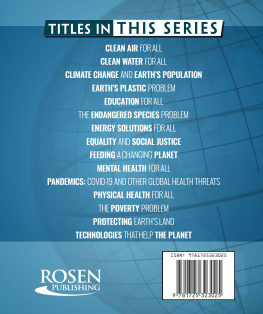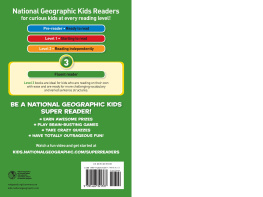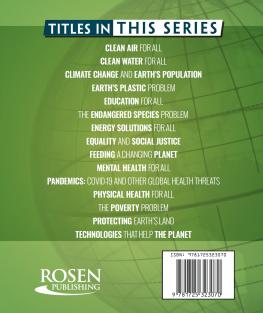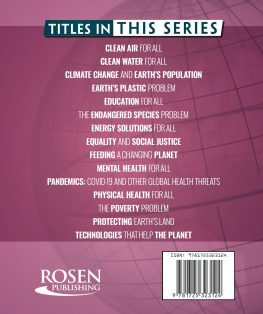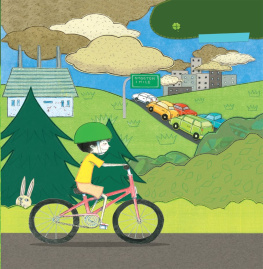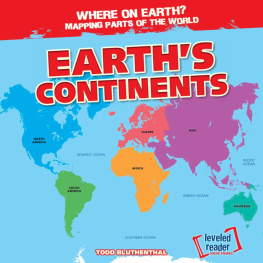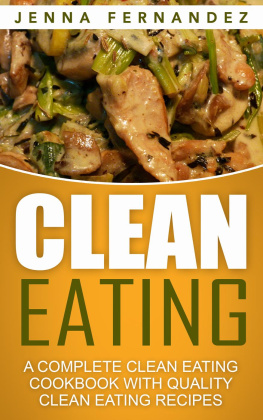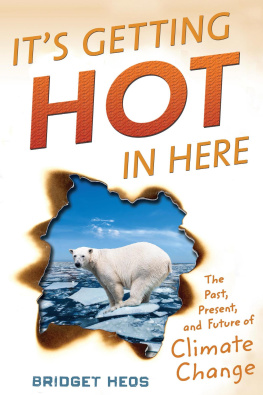
Published in 2022 by The Rosen Publishing Group, Inc.
29 East 21st Street, New York, NY 10010
Copyright 2022 by The Rosen Publishing Group, Inc.
All rights reserved. No part of this book may be reproduced in any form without permission in writing from the publisher, except by a reviewer.
Editor: Theresa Emminizer
Book Design: Michael Flynn
Photo Credits: Cover Gino Santa Maria/.
Library of Congress Cataloging-in-Publication Data
Names: Furgang, Kathy, author.
Title: Clean air for all / Kathy Furgang.
Description: New York: Rosen Publishing, [2022] | Series: Spotlight on global issues | Includes bibliographical references and index.
Identifiers: LCCN 2019051821 | ISBN 9781725323025 (library binding) | ISBN 9781725322998 (paperback) | ISBN 9781725323001 (6 pack)
Subjects: LCSH: Air--Pollution--Juvenile literature. | Air quality management--Juvenile literature.
Classification: LCC TD883.13 .F87 2022 | DDC 363.739/2--dc23
LC record available at https://lccn.loc.gov/2019051821
Manufactured in the United States of America
Some of the images in this book illustrate individuals who are models. The depictions do not imply actual situations or events.
CPSIA Compliance Information: Batch #CSR22. For further information contact Rosen Publishing, New York, New York at 1-800-237-9932.

CONTENTS

CHAPTER ONE
BREATHE
IN
Breathe in and then slowly breathe out. Whos responsible for making sure the air you breathe is clean and wont make you sick? Some may say its the job of governments, corporations, or even scientists. In truth, we are all responsible for helping keep our air clean and safe.
We wouldnt be able to live on Earth if the atmosphere was too polluted. However, we cant entirely control the quality of the air we breathe. Natural pollutants get into the atmosphere and affect our breathing. Thick smoke from forest fires can hang in the air and irritate our lungs. Invisible gases from volcanic eruptions can be dangerous as well.
Even though there are many natural air pollutants, humans also cause serious damage to the quality of the air. For centuries, air pollution has been a growing concern around the world. If you can picture a city skyline with factory smoke pumping into the air, you can imagine the challenges of combating air pollution. Growing populations need energy, and they need goods that are produced in factories. However, these processes often pollute the air.
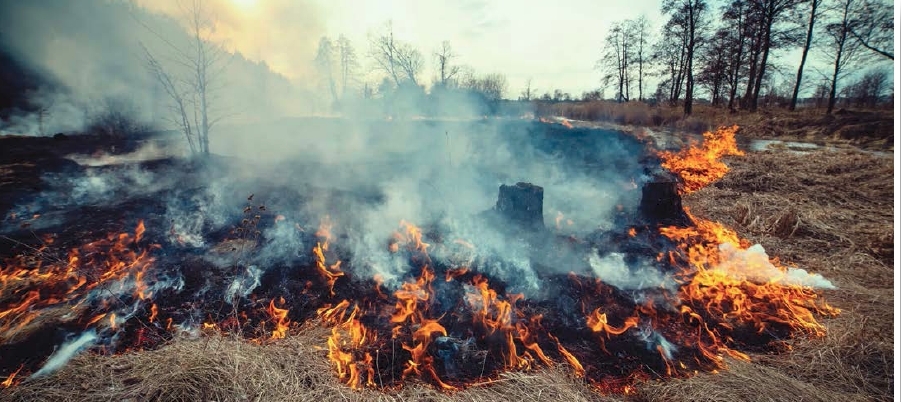
Air pollution is serious and can be deadly. Fortunately, people have made changes over the past centuryand especially over the past 50 or 60 yearsthat have saved countless lives and improved air quality for millions of people around the world. The actions of individuals can make a large impact on the air quality for all people. You can take part in the fight for clean air too!

People should be able to enjoy clean, fresh air even when theyre in big cities.
According to the American Lung Association, pollution particles can be smaller than 1/30th the diameter of a human hair. This makes them easy to breathe in through the nose or mouth, and such tiny particles can easily enter the lungs as well.
Breathing in polluted air is linked to many illnesses. It increases the risk of lung cancer, it irritates asthma, and its linked to some types of heart disease. Polluted air has also been linked to strokes, autism, diabetes, and lower IQ.
A disease known as bronchitis tightens the pathways to the lungs and makes breathing difficult. During a time when Great Britains air was very polluted at the turn of the 20th century, bronchitis was the leading cause of death there.
Even with improvements in air quality over the past century, air pollution is still a major cause of death around the world. According to the Environmental Defense Fund (EDF), air pollution causes 6.4 million deaths per year, and more than a half million of those people are children. Even with limits on outdoor air pollution, the World Health Organization (WHO) estimates that 300 million children live where air pollution is more than six times the international limit.
Air pollution affects people differently based on age and location. Children and the elderly are affected the most by poor air quality because their lungs are still forming or may be weak. People living in cities or near busy highways are at a greater risk of disease due to air pollution.


Air pollution and poor air quality damage our lungs and cause disease.
CHAPTER TWO
AN ONGOING
PROBLEM
Air quality has been an issue since the times of early civilizations. Historians have found ancient Egyptian mummies with evidence of blackened lungs. Since humans began using fire, smoke and particles from burned materials have created air pollution.
Heat from fires makes the thermal energy needed for many processes, such as cooking and creating raw materials. In time, ancient civilizations began to burn Earth materials to remove metals. This is a process called smelting. During the Middle Ages, smelting to obtain metals such as copper became common throughout Europe. The process filled the air with thick, heavy smoke and soot.
Burning peat is another process that affected air quality in the Middle Ages. Peat is a soil-like material made of partly broken-down plants. Its sometimes the first stage in coal formation. Burning peat produced the high temperatures needed to make glass, bricks, and tiles. Burning peat was popular until the mid-1700s when people began burning coal for energy.
Coal allowed for the start of the Industrial Revolution in the 18th century, when people began using more machines and building factories. Soon factory smokestacks became part of the skylines of large cities. In the United States, factories and mill towns cropped up and poured thick, dangerous smoke into heavily populated areas. Even though the cities of the Industrial Revolution were filled with thick smoke that made people ill, the smog was seen as a sign of prosperity and a booming economy.

Workers at the Solvay Process Company plant, pictured here in Syracuse, New York, during the late 1800s, were at risk for developing lung cancer from asbestos.
To get a clear picture of how widespread the problem of air pollution is in our lives, just think about the impact of cars. We rely on cars to get around, but cars have been polluting our atmosphere for about a century.
Making gasoline involves heating crude oil, a fossil fuel. This oil is a natural resource that takes millions of years to form and must be taken from under the ground. Then the oil must be processed through factory systems that pollute the air and contribute to greenhouse gases in the atmosphere. These gases include carbon dioxide, methane, nitrous oxide, and others. The most abundant of these, however, is carbon dioxide.
Next page
